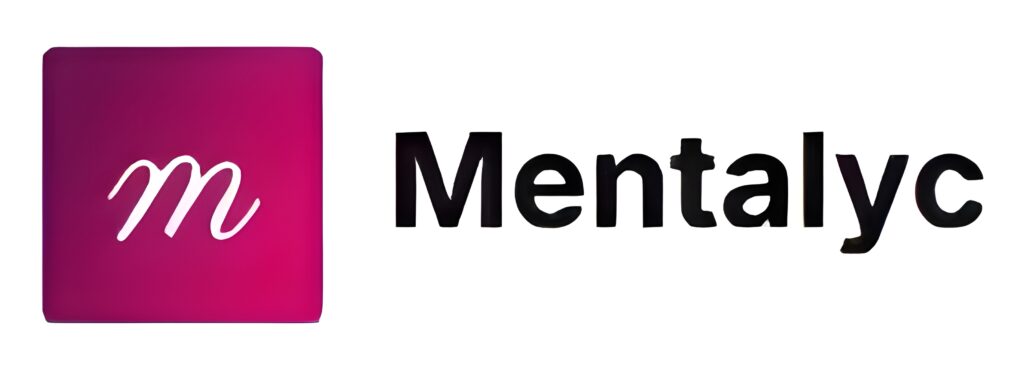Have your progress notes written for you automatically
That incident still resonates in my head. I was in the elevator heading to my clinic when I got captivated by a poster hanging in the hallway: “Care not documented is care not purveyed.” I spent the whole day having a hard time deciphering the meaning behind it; until it popped up: if your services were not documented, they didn’t happen!
Why Do Case Notes Have to Exist? Really, Why?
Most of the care providers that I have ever met argue, and probably rightly so, that “less documentation equals more care”! To put it simply, many fairly believe that time during therapy sessions would be better spent on inpatient care rather than wasting it on bothersome documentation. OK, yeah, you might be right, or you might not!
Let me explain. I understand your frustration. Most of us find it tedious to take notes throughout sessions while having to stay on top of things, but the importance of documentation is something that can’t be stressed enough. Whether you are the one providing care, a social worker, or a third-party agent, no matter who you are, the therapy notes are your stepping stones for efficient patient management.
It is the mere act of documentation that will assist investigators in compiling data, understanding patterns, and identifying better, more efficient ways of providing care, thereby ensuring the long-term success of all stakeholders: the provider, the patient, and the practice.
Now, some might be pondering, “As a case manager, how will notes be of interest to my practice, if any?” That’s why you are here, aren’t you?
As a Case Manager, How Will Notes Be of Interest to My Practice?
In the realm of case management, documentation is as vital as it is with core care providing. Your main duty as a case manager is to ensure a plethora of services for patients with the central aim of promoting their well-being. As a care manager, you are bound to serve as an advocate for your clients in obtaining various social services.
This is a comprehensive process that involves evaluating, planning, coordinating, executing, and assessing services for the client. With that in mind, case notes will be of utmost importance for your excellence by serving as a comprehensive record of clients’ interactions and a place to store any relevant information regarding their treatment journey.
As such, case notes ensure your commitment to meeting the evolving needs of your clients by meticulously documenting the progress, aspirations, and treatment outcomes of your clients through such notes.
What Is The Case: All That It Entails
A client case can be regarded as a window into the therapeutic journey, capturing every important detail along the path. Case management begins with the first client contact where the therapist conceptualizes the case by creating an INTAKE NOTE and TREATMENT PLAN. As therapy progresses, the case is updated in follow-up sessions through THERAPY PROGRESS NOTES, and by the end of therapy, it’s summarized in DISCHARGE NOTES.
Generally speaking, there are three ways of looking at the case:
Symptom-Focused Approach:
This approach identifies symptomatology and functional impairment and then specifies treatment goals and possible interventions for reducing symptoms and increasing functioning whilst emphasizing measurable objectives that are stated in behavioral terms.
Theory-Focused Approach:
Besides recognizing symptoms and impaired functioning, this approach shifts focus to provide a compelling explanation for such symptoms. As such, this perspective delves into the “why” question of the case, providing a theoretically guided explanation of a client’s condition.
Pattern-Focused Approach:
This approach is based on the overall distinctive patterns represented by the client and factors contributing to the client’s mode of action and functioning. It delves into the case presentation, precipitants or triggers, predisposition, and maintaining factors.
What About Case Notes?
Case notes, on the other hand, are a log of a client’s therapeutic journey and advancements toward pre-set goals. Simply put, case notes are all the notes that get created along the whole therapy process and include but are not limited to: intake notes, treatment plans, progress notes (SOAP, DAP, GIRP, BIRP, PRP, etc.), and discharge notes; as we further explain in the upcoming sections.
While meticulously recording information is crucial for healthcare and social work professionals, that doesn’t imply that every detail is to be included. The key is for you to document what is pertinent to the patient’s well-being and their care provider’s interest.
This can involve documenting procedures and treatment plans, recounting conversations or appointments, and any client requests. These notes can reflect both triumphs and setbacks along the therapeutic journey whilst painting a clear picture that reflects the care received by the client.
Case Intake Notes
Your initial encounter with a client serves as a chance to uncover their backstory and set the stage for the therapeutic process. As such, your intake notes from this first meeting will encompass a wealth of information about the client’s mental health history, present distress, personal and familial background, and prior treatments received. These intake notes serve as a comprehensive launchpad for you to grasp the client’s current situation and tailor a customized therapy plan. They describe the client’s:
- Presenting Problem: presenting symptoms and/or concerns
- Mental Status: appearance, mood, perceptual and cognitive status, etc.
- Social History: social and intimate relationships
- Health History: health status, previous therapy, etc.
- Possible Diagnosis
- Treatment Formulation: treatment goals and corresponding treatment interventions, likely obstacles, and the overall plan along the phases of treatment
Treatment Plan
Treatment plans are one of the most critical tools for successfully engaging a client in therapy. These plans outline the specific issues at hand and serve as the foundation for the therapeutic journey.
By concisely identifying the client’s individual challenges, the therapist can then construct a targeted framework of goals and steps that are understandable and reasonable for the client as he progresses forward.
A well-articulated treatment formulation:
- serves as the basis for “tailoring” interventions
- specifies a clearly defined “treatment focus” and “intervention strategy”
- anticipates treatment “obstacles” (e.g., resistance, transference, non-compliance)
- provides a prognosis, that is, a prediction of the likely outcomes of treatment
The treatment plan should be continuously updated as therapy progresses. A survey conducted by Mentalyc in early February 2023 found that most therapists update their plans every 3 months, while the second most common update interval was reported to be 6 months.
Therapists reported that this helps them “anticipate obstacles and challenges to the implementation of the treatment plan,” which is indispensable to eventually ensuring treatment success.
Case Progress Notes: A Glimpse of the Available Formats
Case management notes come in a variety of formats, each with its own unique touch. The format used, be it D.A.P, G.I.R.P, B.I.R.P, P.I.R.P, S.O.A.P, or any other standard format, largely depends on the choice of the individual facility or group.
SOAP Style
SOAP stands for Subjective, Objective, Assessment, and Plan, and it involves: Subjective Data: Capture your client’s subjective thoughts and feelings about their treatment plan. Objective Data: Factual data, such as lab results and physical observations, are documented in this section. Assessment: Note your evaluation of your client’s condition and progress. Plan: Outline your goals for the client, including care goals and recommendations for achieving their therapeutic objectives.
DAP Style
DAP stands for Data, Assessment, and Plan, and it follows this pattern: Data: Highlight your client’s words and your observations from the client during the session. Assessment: Document what happened during the session with an assessment of the client’s general appearance, mental and physical state, and nonverbal cues. Plan: Keep track of the client’s responses to treatment plans and any hindrances to achieving their goals.
GIRP Method
GIRP exemplifies Goal, Intervention, Response, and Plan, and includes: Goal: Highlight the client’s main objectives and therapeutic goals. Intervention: List the interventions that you will be employing as a case manager to achieve the goals written down in the section above. Response: Document the client’s reactions, whether articulated by the client in words or not (verbal cues), as well as their progress toward their goals. Plan: Develop a strategy for the client moving along to achieving treatment goals.
BIRP Format
BIRP stands for Behavior, Intervention, Response, and Plan, and it involves: Behavior: Document observations and direct quotes from the client. Intervention: Record your approach as a case manager to achieve the client’s goals and objectives. Response: Track the client’s reactions to interventions in action, and the progress made toward therapeutic goals. Plan: Outline an action plan for achieving therapy goals and adopting changes to them as deemed necessary.
PIRP Approach
PRIP stands for Problem, Response, Intervention, and Plan, and it encompasses: Problem: Take note of the client’s exact words on any problems they have. Intervention: Your intervention will be designed to suit your client’s unique circumstances, and your treatment plan will reflect that. Response: Monitor your client’s response to your care and document their progress towards their objectives. Plan: Document the achievement of goals and any changes to the treatment plan, as well as any referrals to community resources.
Case Discharge Notes
Discharge notes summarize the whole episode of care and are written when a client is discharged from the provider’s care and must include:
- A reflection on the treatment received
- Reason for discharge
- Date of discharge
- The client’s condition upon departure
- Notification of relevant parties
- Recommendations for aftercare
What Makes Good Case Notes: Things to Remember
When crafting a standard case note, the following elements must be kept in mind:
Know What You Must Write
Simply put, steer clear of mindless scribbling. Don’t fall into the trap of thinking case notes are just a boring chore, especially if you have to complete forms designed by your employer or comply with insurance billing requirements. It might seem like all you have to do is to reach a certain word count on the page, but the truth is that sometimes less can be more.
In the realm of case management documentation, it pays to be succinct and precise. Focus on what is relevant, only! Overloading your notes with extraneous information only hinders your ability to easily locate the crucial data that drives your case management forward.
Clarity Is Key
Remember, your notes may need to be read by someone else in a rush. To avoid any confusion and potential legal trouble, make sure your notes are straightforward and free of abbreviations or shorthand that others might not understand.
If Faced With Ambiguity, Ask for Help
While we may understand what we have written, it’s not always clear if others will comprehend it just as easily. To make sure your message is unambiguous, consider having a fresh pair of eyes read your case note and give you their feedback.
Avoid the Fatal Mistake
While jotting down your observations, try to steer clear of one of the most common pitfalls: a tone infused with prejudice.
Embrace the power of technology to make case management note-taking a breeze
With a plethora of advantages, utilizing a therapy note documentation software will make your life easier. All are worth exploring, but Mentalyc surely shines brighter than the rest!
Putting It All Together
Your notes serve as the backbone for your client’s journey towards social integration and their therapeutic progress. By sidestepping typical note-taking blunders, you can establish a strong foundation for effective case management and bring about tangible results in patient care. Embracing technology-based solutions such as Mentalyc not only transforms the way you operate but also brings a sea change to your note-taking skills. With Mentalyc, everything will be streamlined, automated, and traceable, and the quality of care you deliver will soar to new heights.
References:
- Chall, & CaseWorthy. (2023, January 25). Social work case note templates and best practices. CaseWorthy. Retrieved February 5, 2023, from https://caseworthy.com/blog/social-work-case-note-templates-and-best-practices/
- Introduction to the Case Management Body of Knowledge | CCMC’s Case Management Body of Knowledge (CMBOK). (n.d.). Retrieved February 7, 2023, from https://cmbodyofknowledge.com/content/introduction-case-management-body-knowledge
- Ten steps to navigate ethical, legal challenges in case management. (n.d.). Retrieved February 7, 2023, from https://www.researchgate.net/profile/Ellen-Fink-Samnick/publication/280714048_Ten_Steps_to_Navigate_Ethical_Legal_Challenges_in_Case_Management/links/55c2096b08aea2d9bdbfda6a/Ten-Steps-to-Navigate-Ethical-Legal-Challenges-in-Case-Management.pdf?origin=publication_detail










